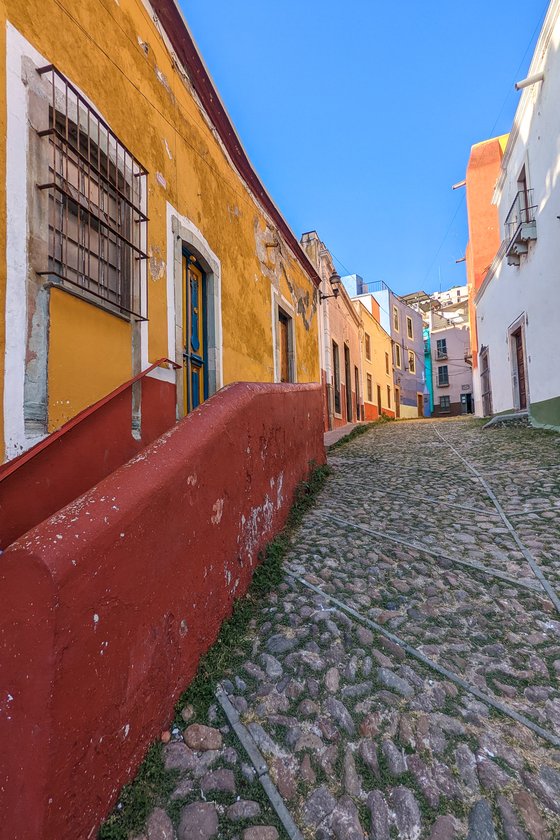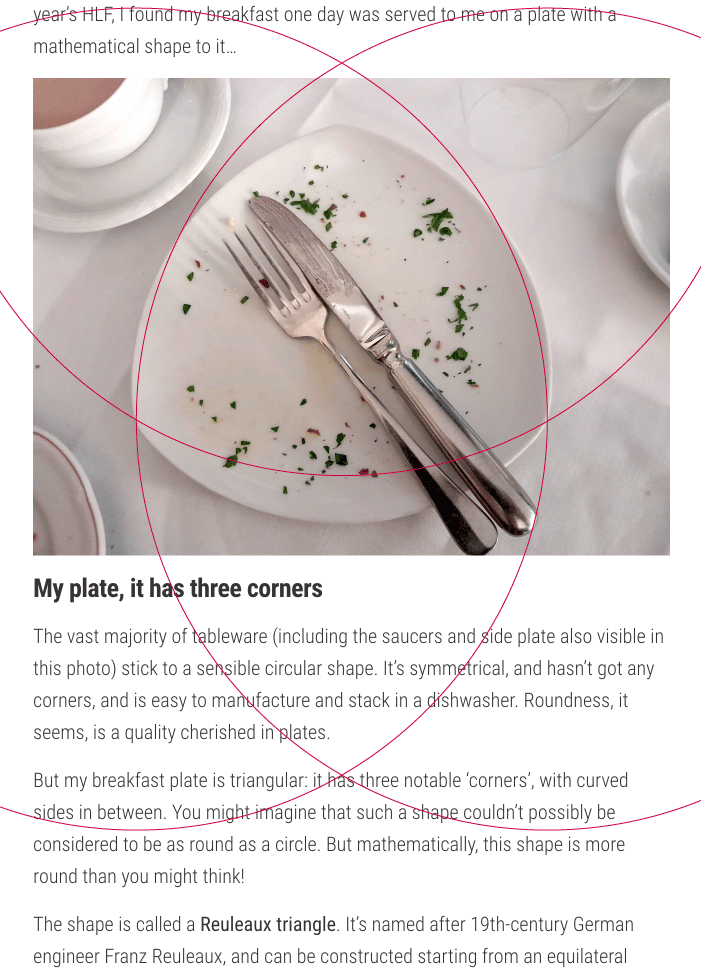Linkage
-
Digital astronomy with cellular automata (\(\mathbb{M}\), via). No, this is not about using CA to study patterns in the sky (though that might be interesting); it is about using UMAP dimension-reduction techniques to create something like a Hertzsprung-Russell diagram for finding CA rules with complex behavior.
-
My photos from my recent visit to Guanajuato are now online (\(\mathbb{M}\)). Very pretty city, and good food, worth a visit. My recommendation from the locals for their favorite restaurant was Truco 7, where I had amazing chicken mole for much less than I would have expected. Off the main streets much of the city looks like the photo below: steep narrow alleys with very colorful buildings. Maybe not the best for accessibility.

-
Galactica can generate Wikipedia articles, supposedly, but actually writes total bullshit resembling a Wikipedia article but not resembling any real-world use of the title term. The example given by Carl T. Bergstrom is for “Brandolini’s law, the principle that bullshit takes another of magnitude less effort create than to clean up”.
-
Formal proof of Smale’s sphere-inversion theorem (\(\mathbb{M}\)), showing that “Lean doesn’t do just algebra or abstract nonsense, but really serious geometric topology, too”.
-
You can build anything you want in Conway’s Game of Life by colliding 15 gliders together (\(\mathbb{M}\)). Anything that you can build out of any larger number of gliders, that is.
-
The Construction & Principal Uses of Mathematical Instruments (\(\mathbb{M}\), via), a digital edition of a 1709 book by Nicolas Bion, as translated into English in 1758 by Edmund Stone. Site designed as an exercise by Nicholas Rougeux; see also Rougeux’s blog post about the site design.
-
Maths at internet speed. Terry Tao links to Justin Gilmer’s breakthrough on the union-closed sets conjecture, followed in quick succession by improvements by Will Sawin, Zachary Chase and Shachar Lovett, and Ryan Alweiss, Brice Huang, and Mark Sellke. See also Gil Kalai’s blog post. In other news, Terry Tao is now on mathstodon.
-
The Chambered Nautilus (\(\mathbb{M}\)). Curved paperfolding model by oschene (Philip Chapman-Bell).
-
Minor terminological disagreement with some coauthors (\(\mathbb{M}\)): let \(T\) be a single-source shortest path tree in an unweighted undirected graph. Can you call \(T\) a “BFS tree”? Or is that only for trees that could be generated by breadth-first search? E.g. consider shortest paths in \(K_{2,3}\) starting from the 3-vertex side. For breadth first search, two leaves from the 3-vertex side will share a parent. But there is a different shortest path tree where they have different parents. Is it a BFS tree?
-
Extended thread on combinatorial species of linear orderings and permutations by John Baez (\(\mathbb{M}\)). I had the vague impression that a combinatorial species and a combinatorial class were more or less the same thing: a ranked collection of combinatorial objects, equivalent when they have the same number of objects of each rank. But that’s not accurate. It describes classes, but not species, which have a more specific equivalence relation. In particular, the linear orderings and the permutations form the same combinatorial class (they are both counted by the factorials), but different combinatorial species.
-
Who first thought of the notion of Polynomial Time (\(\mathbb{M}\))? As Gasarch points out, the usual answer of Cobham and Edmonds in 1965 is incorrect. The same distinction, between polynomial and super-polynomial algorithms, already appeared in a 1910 paper of Henry Cabourn Pocklington. In the comments, Martin Berger points to the even-earlier analysis of Euclidean GCD, for which a polynomial bound was known by 1841.
-
Leah Berman Williams posts a new mathematical sculpture: a tetrahedron with its faces symmetrically knotted into trefoils.
-
Quanta profiles Wei Ho (\(\mathbb{M}\)), her research on elliptic curves, and her new post as director of the Women and Mathematics program at the Institute for Advanced Study.
-
Not every curvy triangle is a Reuleaux triangle (\(\mathbb{M}\)). Even if you ascribe the greater width than height in the photo (from a post by Katie Steckles at the Heidelberg Laureate Forum) to an angled perspective, and imagine it to be 3-way symmetric, this plate is too bulgy to be Reuleaux. Still a fun example to find at a mathematics facility, though.

This has been a special edition of “Things that are not Reuleaux triangles”; for the most recent full episode, see “The shapes of triangular pencils”.